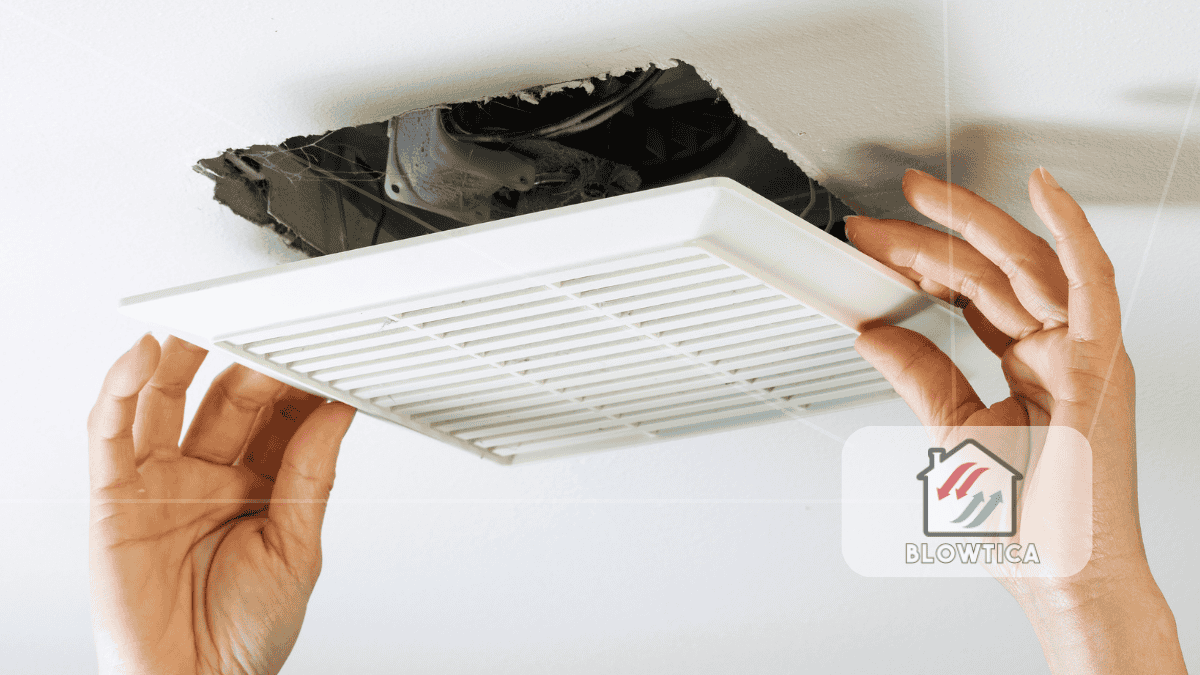
Optimizing airflow in your home improves comfort, cuts energy costs, and supports healthier living. This updated guide offers proven strategies, fresh insights, and practical steps, everything you need to breathe new life into your space. Whether you’re exploring diy home improvement tips as a novice or tackling projects as a weekend warrior, you’ll find smart, doable solutions that pay off.
Why Fresh Air Flow Matters
Proper ventilation isn’t just about keeping things breezy. It also:
- Reduces indoor humidity and the risk of mold.
- Helps evenly regulate temperature, so rooms warm and cool more uniformly.
- Removes airborne irritants dust, pet dander, cooking odors for cleaner, safer air.
- Lightens the load on HVAC systems, lowering energy bills and extending system lifespan.
These diy home improvement tips reinforce that a well-ventilated home isn’t a luxury, it’s a health and efficiency essential.
Deep-Clean Vents, Registers & Ducts
Cleanliness lays the foundation for airflow:
- Remove, wash, and sanitize vent covers. Use mild detergent and let them fully dry before reinstalling.
- Vacuum the openings with a brush attachment; follow it with gentle air pressure from a leaf blower if possible.
- If dust deep in the ducts is a concern, rent a professional-grade duct-cleaning kit, it’s often under $30 for a weekend rental.
- Schedule HVAC filter replacements every 30–90 days, choosing filters with MERV ratings suited to your HVAC’s capabilities.
This is one of the most cost-effective diy home improvement tips with immediate, tangible results.
Smart Ceiling Fan Use
A well-chosen ceiling fan can elevate comfort and efficiency:
- Choose the correct blade span for your room size and a motor that matches the room’s ceiling height.
- Seasonal reversibility is critical: blades should spin counterclockwise in summer and clockwise in winter.
- Clean blades quarterly, and check that the fixture is rock‑free and level.
A properly tuned ceiling fan keeps air moving just one of many solid diy home improvement tips that pay off year-round.
Upgrade Exhaust Fans in Kitchens/Bathrooms
Moist, stuffy air belongs outdoors:
- Always vent exhaust fans directly outside, never into attic spaces.
- Choose models with at least 1.1 sone loudness or lower and airflow rates above 80 CFM.
- Clean fan grills and blades every few months.
- Retrofit old models with motion sensors or humidity sensors to automate usage and save energy.
This is a high-impact tip among diy home improvement tips, especially in moisture-prone rooms.
Create Balanced Intake & Exhaust
Healthy airflow is about balance not just pushing air out:
- Install trickle vents or passive wall inlets that let fresh air in without wasting energy.
- Seal large air leaks with weatherstripping, expandable foam, or door sweeps then add intentional inlets.
- Add transfer grilles or undercut doors to keep air flowing between rooms.
Balanced ventilation stops hot or stale air from getting trapped, and is an advanced diy home improvement tip that improves comfort significantly.
Get Creative with Windows & Fans
Windows are more than light portals; they’re airflow tools:
- Achieve cross breezes by opening windows on opposite sides of rooms.
- Install top-hung awning or transom windows to help warm air escape naturally.
- Add window-mounted fans with dual directions for pushing stale air out and pulling fresh air in during cooler hours.
These tactics are among the more inventive diy home improvement tips for homes without centralized HVAC.
Fortify Insulation & Sealing
Even airflow upgrades perform poorly in leaky homes:
- Seize small cracks and gaps around ductwork, window frames, and electrical outlets with spray foam or caulk.
- Max out attic insulation to recommended R‑values or upgrade wall insulation if accessible.
- Use mastic or foil tape (not duct tape) to seal and secure duct joints.
Sealing your home ensures your airflow improvements actually move air where it’s needed—definitely a high-value diy home improvement tip.
Zone Heating & Cooling for Precision
Not all rooms are equal, and your comfort shouldn’t reflect that:
- Program your thermostat to heat/cool different zones on distinct schedules.
- Add smart plugs or smart vents to fans or heaters for automated airflow control.
- For serious airflow customization, explore ductless mini-split systems—you can DIY placement and indoor unit installation.
Zoning increases comfort precision and efficiency, one of the best diy home improvement tips for any homeowner.
Maintain Outdoor Vent Paths
Airflow starts outside your walls:
- Keep shrubs, leaves, or other debris clear from dryer, bathroom, and kitchen vents.
- Secure pest- and debris-proof flaps on all exhaust outlets.
- Clean dryer vents annually; buildup can hinder airflow and increase fire risk.
Small outdoor checks like these qualify as essential diy home improvement tips—even though they’re easily overlooked.
Establish a Maintenance Routine
Longevity beats one-off fixes:
| Task | Interval |
|---|---|
| Replace HVAC filter | 1–3 months |
| Wash vents, grilles | Every 6 months |
| Outdoor vent inspection | Yearly, in spring |
| Attic/roof vent check | Annually |
| Ceiling fan blade alignment | Every season change |
| Inspect duct seals | Every 2 years |
Sticking to a maintenance rhythm ensures your diy home improvement tips deliver air quality benefits year after year.
Cost & ROI Breakdown
- DIY duct cleaning kits: $25–40 rental → improved airflow + up to 10% energy savings.
- Ceiling fans: $100–300 installed → reduces HVAC usage by 30–40%.
- Smart vents/plugs: $20–50 per unit → cuts energy bills 5–15%.
- Insulation/sealing: $200–1000 depending on scope → pays back via lower heating/cooling bills.
Real-world ROI ranges from 20% to 50%, especially when multiple tactics are combined.
Case Study Insights
Weekend Flat in Metro Area
- After cleaning ducts, adding a ceiling fan, and sealing window gaps, indoor air felt cooler and less stale.
- Cooling time dropped by 40%, and monthly AC runtime decreased by 12%.
Renovated Open-Plan Home
- Implemented passive vents, smart fan controls, and a zoned mini-split unit.
- Occupants reported no hot spots, and HVAC costs dropped 18%.
These tangible successes highlight how combining multiple diy home improvement tips produces powerful results.
Avoid These Common Blunders
- Neglecting return vents – you need both supply and return for good circulation.
- Sealing without planning intake – sealing leaks helps only if fresh air can re-enter.
- Overfilling interiors with fans – oversized fans are noisy, inefficient.
- Ignoring measurements – sensor data empowers effective decision-making.
- Skipping upkeep – even the best solutions degrade without care.
Avoid these pitfalls to keep your diy home improvement tips truly delivering.
How to Prioritize Projects
- Audit your current airflow look for stagnation, draft, or room-to-room variance.
- Start simple, like vent cleaning and filter replacement.
- Add fans, sensors, sealing, and passive vents next.
- Track changes in comfort, energy usage, humidity, and temperature balance.
- Fine-tune based on data, add zoning, duct upgrades, or insulation as needed.
A methodical path ensures you layer these diy home improvement tips effectively for lasting gains.
Final Takeaways
These refined diy home improvement tips empower you to create a well-ventilated, energy-efficient, and comfortable home. Focus first on easy wins, clean vents, install ceiling and exhaust fans then layer in sensor tracking, targeted zone controls, and airflow-intensive tasks like duct balancing and passive ventilation.
With careful planning, data-driven tweaks, and disciplined maintenance, you’ll enjoy a home that breathes better, saving money, improving air quality, and boosting comfort every day.









